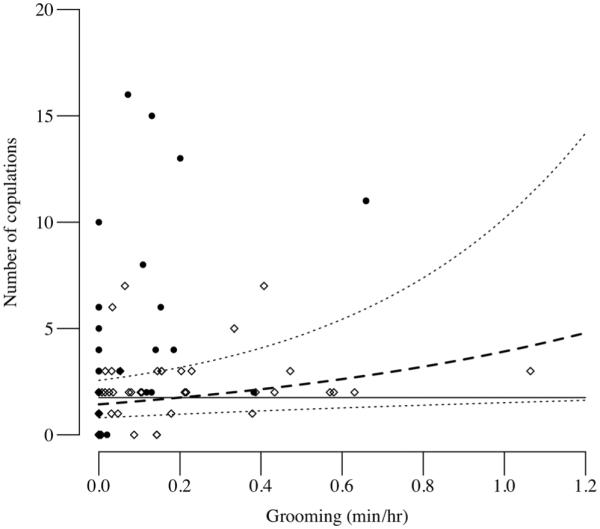Fig. 3.

Relationship between dyadic rates of male grooming (min/h) of cycling females and male mating success (number of copulations) amongst two communities of East African chimpanzees. Data points (black circle indicates Sonso; white diamond indicates M-group) represent unique male–female dyads. The dashed line shows the relationship for M-group community males predicted by generalized linear mixed modelling (Table 3), using the model with the lowest Δ value (Table 4) and so controlling for mate availability (number of fully swollen females) and male aggression. Dotted lines show the 95 % CI. The solid line shows the (non-significant) relationship between grooming and mating for the Sonso males
